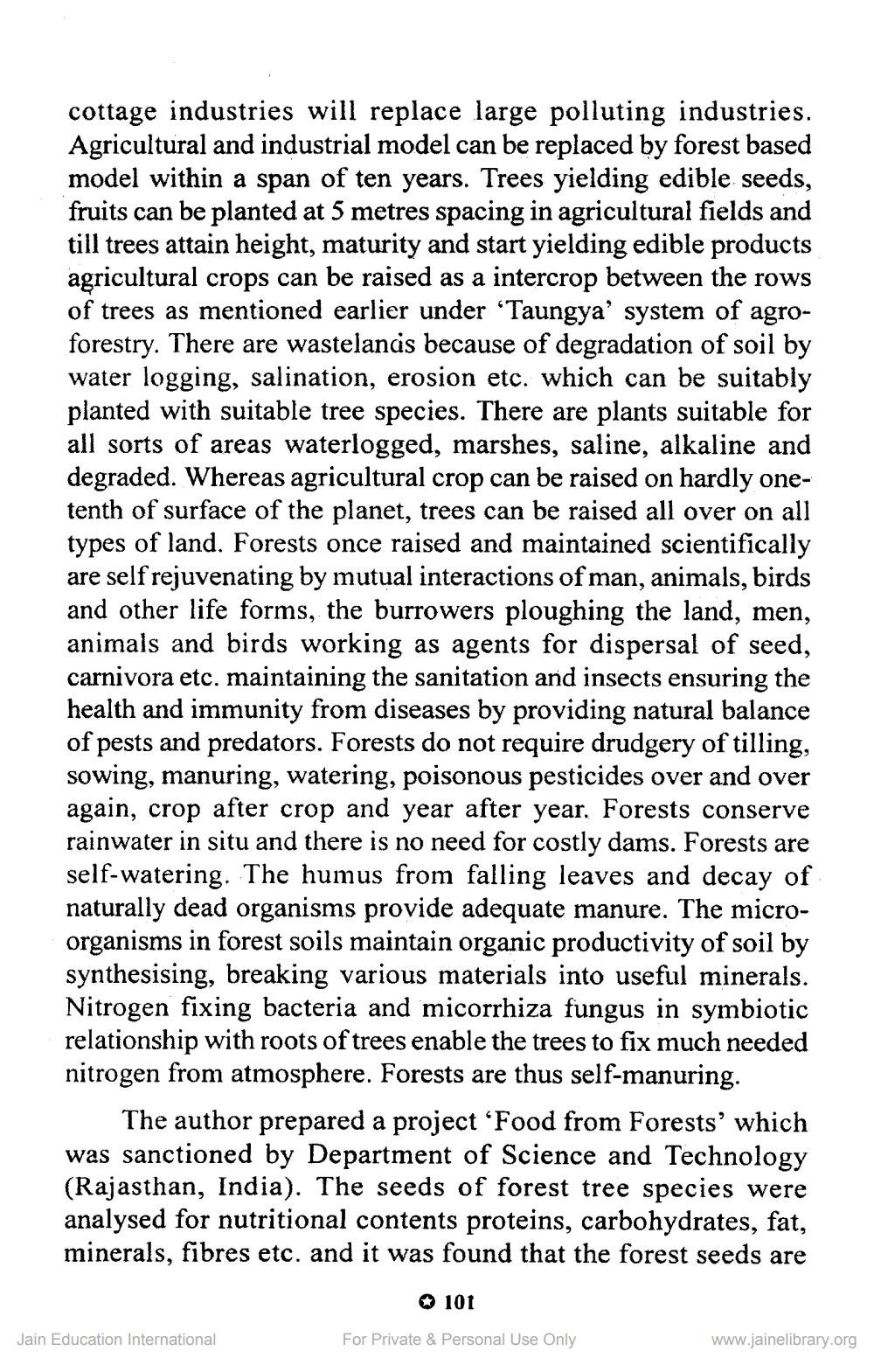________________
cottage industries will replace large polluting industries. Agricultural and industrial model can be replaced by forest based model within a span of ten years. Trees yielding edible seeds, fruits can be planted at 5 metres spacing in agricultural fields and till trees attain height, maturity and start yielding edible products agricultural crops can be raised as a intercrop between the rows of trees as mentioned earlier under 'Taungya' system of agroforestry. There are wastelands because of degradation of soil by water logging, salination, erosion etc. which can be suitably planted with suitable tree species. There are plants suitable for all sorts of areas waterlogged, marshes, saline, alkaline and degraded. Whereas agricultural crop can be raised on hardly onetenth of surface of the planet, trees can be raised all over on all types of land. Forests once raised and maintained scientifically are self rejuvenating by mutual interactions of man, animals, birds and other life forms, the burrowers ploughing the land, men, animals and birds working as agents for dispersal of seed, carnivora etc. maintaining the sanitation and insects ensuring the health and immunity from diseases by providing natural balance of pests and predators. Forests do not require drudgery of tilling, sowing, manuring, watering, poisonous pesticides over and over again, crop after crop and year after year. Forests conserve rainwater in situ and there is no need for costly dams. Forests are self-watering. The humus from falling leaves and decay of naturally dead organisms provide adequate manure. The microorganisms in forest soils maintain organic productivity of soil by synthesising, breaking various materials into useful minerals. Nitrogen fixing bacteria and micorrhiza fungus in symbiotic relationship with roots of trees enable the trees to fix much needed nitrogen from atmosphere. Forests are thus self-manuring.
The author prepared a project 'Food from Forests' which was sanctioned by Department of Science and Technology (Rajasthan, India). The seeds of forest tree species were analysed for nutritional contents proteins, carbohydrates, fat, minerals, fibres etc. and it was found that the forest seeds are
Jain Education International
101
For Private & Personal Use Only
www.jainelibrary.org




